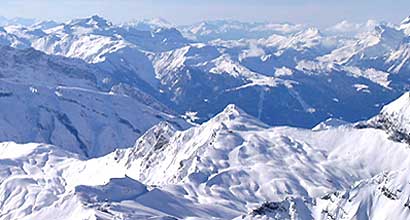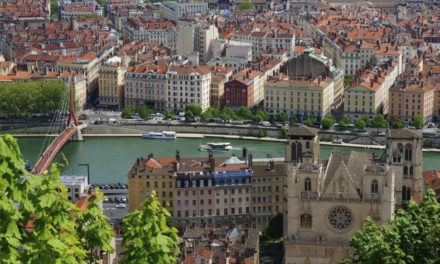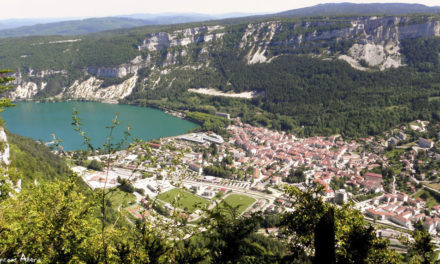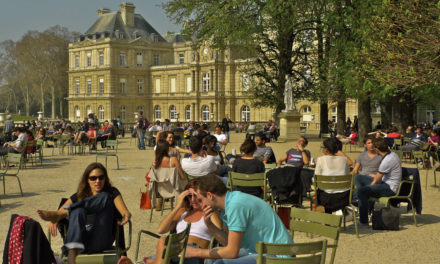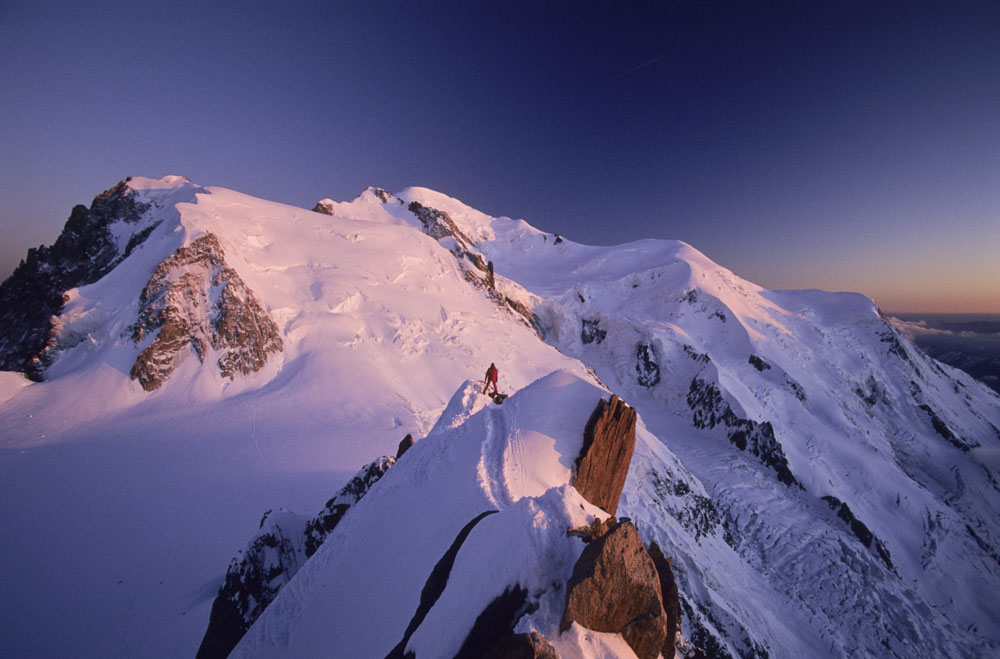
Image – Mont Blanc, more than 4,800 metres above sea level, Copyright Atout France/Franck Charel.
Stretching south from Lake Geneva (or Lac Léman), the largest lake in Western Europe, to Mont Blanc, the largest mountain in Europe, Haute Savoie is one of the most frequented destinations of the skiing fraternity. The département has some of the most sought after and chic ski resorts, from Chamonix, which hosted the first ever Winter Olympics in 1924, with its Alpine Museum at the foot of the towering splendour of Mont Blanc, to the sophisticated station of Megève – the first ever winter sports resort, created in 1921. Annecy, capital of the département, sits on the northern shores of its lake, reputed to be the cleanest natural lake in Europe, as well as the most romantic in France. With buildings full of faded elegance and reminiscent of the ‘Belle Epoque’, the town has great charm and has a colourful annual ‘Lake Festival’. The old town, crisscrossed by tributaries of the River Thiou, is known as the Venice of the Alps, its streets in summer coloured by numerous displays of geraniums.
Hotels in Haute Savoie
Evian-les-Bains
To discover Lac Léman, you can choose from a variety of cruises on different-sized ships and steamers. The département has two spa towns beside the lake, Evian-les-Bains and Thonon-les-Bains. The first is internationally famous for its mineral water. It also has an old district, a casino, and ecological gardens, the Pré Curieux, reached by boat. Thonon was historic capital of the Chablais area rising above the lake. Its Gothic Château de Ripaille was once a residence of the dukes of Savoy. Vines thrive around the château, producing Vin de Ripaille. Yvoire, also on Lac Léman, is an exceptionally picturesque medieval town well worth visiting. The keep of the XIVth Century Château, built to survey the route from Geneva to Italy across the lake, remains firmly in place, but is not open to the public although you can visit its the charming ‘Jardin des Cinq Sens’, once the vegetable garden but now landscaped with fountains and a labyrinth of hedges, aromatic and medicinal herbs, old fashioned roses and fruit trees.
Chamonix
This department, the most visited in the Rhone Alpes, is especially rich in natural attractions, the most famous of which is, Mont Blanc, highest of the Alpine peaks and first conquered by Balmat and Paccard in 1786. A delightful train takes you up from Fayet or St-Gervais to different points relatively close to Mont Blanc’s summit, depending on the season – either to ski or enjoy the alpine pastures and the views. There are several exhilarating cable car rides you can take up from around Chamonix. The Aiguille du Midi boasts the highest cable car station in the world which first came into operation in 1955. The 20 minute journey takes you from down in Chamonix town to 3,942 metres, offering a stunning panoramic overview of Mont Blanc and the surrounding mountains, including the Swiss and Italian Alps and the Valley of Chamonix. In summer a cable car journey to Italy crosses over 5 kms of glaciers. The Montenvers railway runs from Chamonix up the Mer de Glace, a 7 km long glacier, the largest in France. A cable car in summer takes you down to an underground ice cave. The one and a half hour visit of the nearby Glacier des Bossons explains the life of a glacier in illustrated panels. Other great viewing points in the département include the summit of the Salève mountain with its botanical garden and childrens’ play area, from where you get a superb view of Mont Blanc, Lake Geneva and the Jura mountains. The Cirque du Fer à Cheval near Sixt is a superb semi-circular arena with some 30 waterfalls and vast rock faces, whilst the Devil’s Bridge Gorges are a listed site set in the middle of forest and open from May to September. At Les Houches close to Chamonix is a wildlife park where you are sure of seeing chamois, deer, marmots and other rare Alpine creatures, even if you haven’t spotted them in the wild.
Gastronomy
On the gastronomic front, the wines of the Haute Savoie are predominantly white, and make an excellent accompaniment to the regional fare which is ideally suited to après ski. Try the delicious sizzling beef and cheese fondues, or bubbling raclette cheese layered over new potatoes, eaten with smoked meats. Haute-Savoie produces a wide array of cheeses full of the promise of the alpine pastures like Abondance, Tomme, Vacherin, Emmental and of course, Reblochon – an ‘appellation contrôlée’ cheese with a subtle flavour and a creamy yellow exterior. A wealth of delicious saucissons and other charcuterie make the perfect companions to the Alpine cheeses and the perfect food for high altitude picnics summer as well as winter.
Rent an apartment in – Résidence Maeva Multivacances

